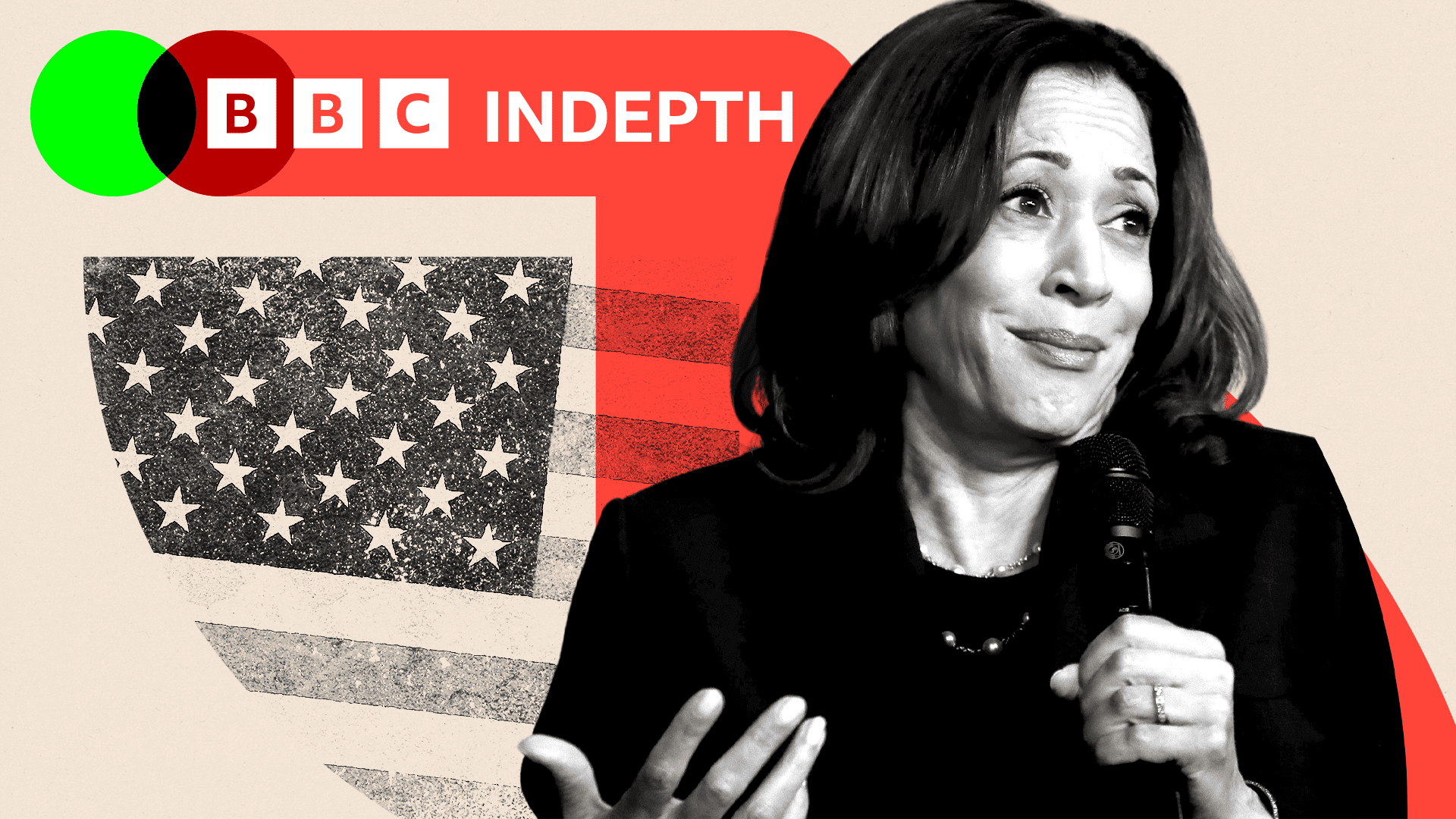Long-doubted by Democrats, Kamala Harris faces her biggest political moment
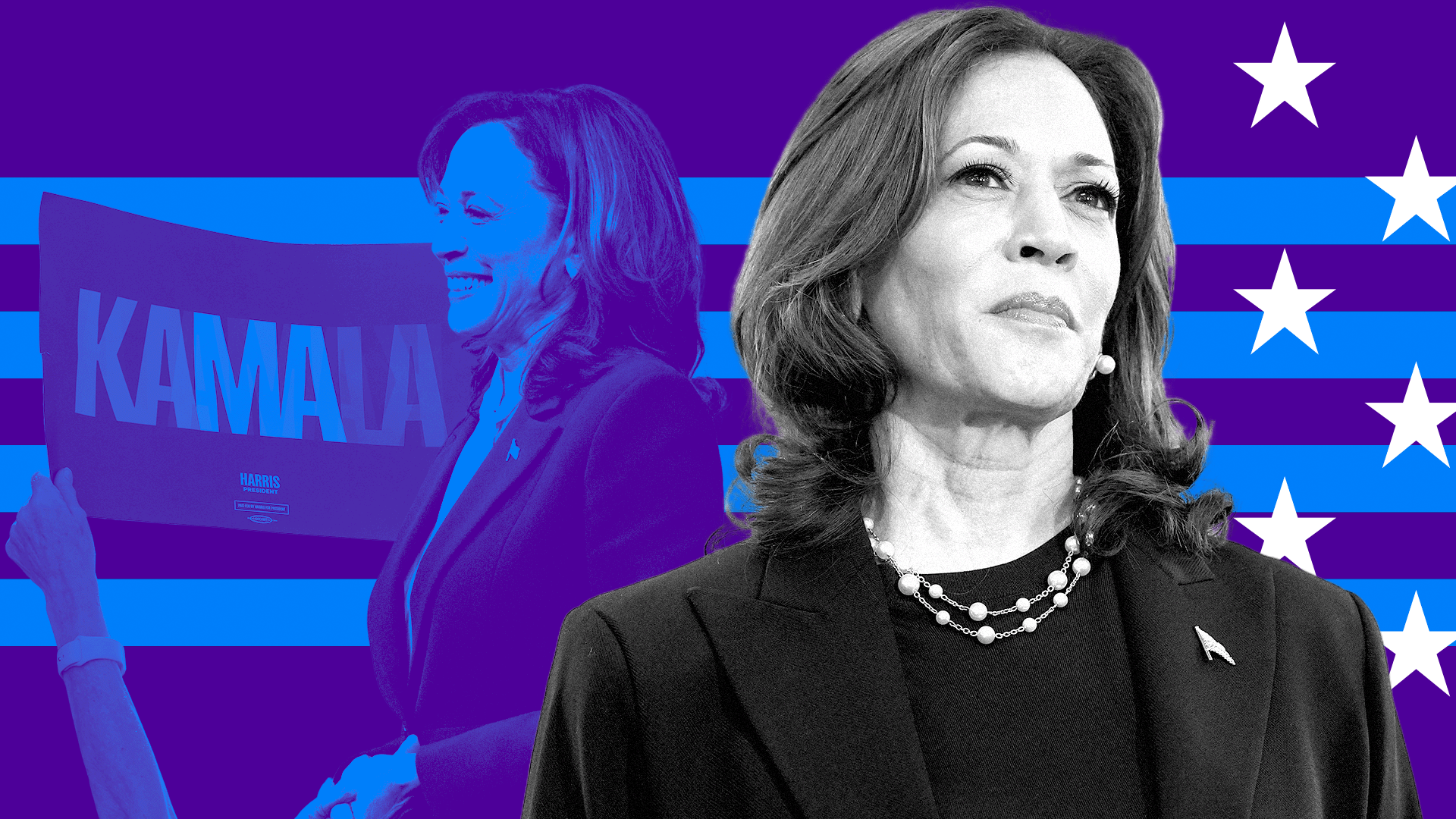
- Published
When Kamala Harris steps onto the stage at the Democratic National Convention in Chicago this week as the party’s presidential nominee, she’ll do so knowing that many in the audience cheering her on once counted her out.
Ms Harris, 59, has faced years of doubt from some within her party about her ability to run for America’s highest political office - including from President Joe Biden, the man whom she continues to serve as vice-president.
Since replacing Mr Biden as Democratic nominee in mid-July, Ms Harris has seen a tidal wave of enthusiasm for her candidacy - reflected in polling, fundraising and the enormous crowds that have come out to see her at rallies across the country.
But the political momentum and energy she has generated in recent weeks among Democrats was never a given.
After failing in a short-lived presidential bid in 2019, she began her vice-presidency on a shaky footing, beset by stumbles in high-profile interviews, staff turnover and low approval ratings. And for the last three-and-a-half years in the White House she has struggled to break through to American voters.
Advisers and allies say that in the years since those early struggles she has sharpened her political skills, created loyal coalitions within her party and built credibility on issues like abortion rights that energise the Democratic base. She has, in other words, been preparing for a moment exactly like this one.
On Thursday, as she formally accepts the Democratic nomination, Ms Harris has an opportunity to reintroduce herself on the national stage with fewer than 80 days until an election that could see her become the nation’s first female president.
At the same time, she’ll have to prove that she is capable of leading a party that never saw her as its natural leader and remains divided over the war in Israel and Gaza.
But above all, she’ll need put to rest any lingering doubt among the Democratic faithful that she can meet the challenge of defeating former president Donald Trump in what remains a tight and unpredictable contest.
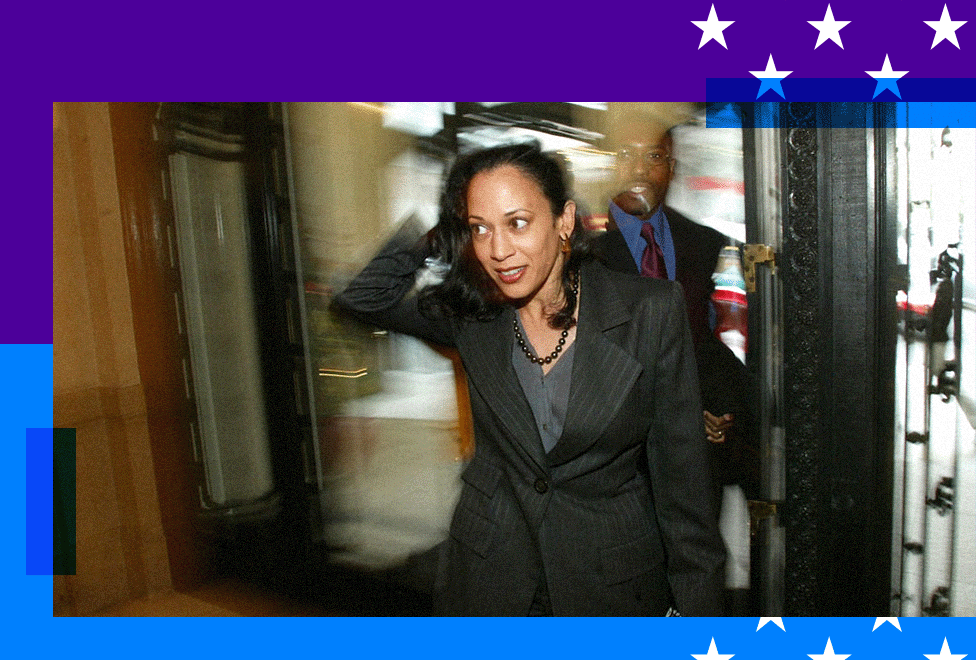
Path to the White House
Before Kamala Harris became a national figure, the former San Francisco district attorney and California attorney general had forged a reputation as a rising star in the party, landing the endorsement of President Barack Obama in her 2010 race to become the state’s top lawyer.
But those who followed her career closely saw a mixed record. As a prosecutor, she faced public outcry for refusing to seek the death penalty for a man convicted of killing a young police officer. And then as attorney-general, she upheld the state’s death penalty despite her personal opposition.
Having reached the peaks of California state politics, she was elected to the US Senate the same night that Donald Trump defeated Hillary Clinton in the 2016 presidential election. In her brief tenure, she made headlines for her searing and direct questioning of Supreme Court Justice Brett Kavanaugh during his testy 2018 confirmation hearings.
“Can you think of any laws that give government the power to make decisions about the male body?” she asked the Trump appointee, in an exchange that cascaded across social media and late night television.
Like Mr Obama, she was a young senator of limitless ambition. Halfway through her first term, she launched a presidential campaign.
That campaign, like this one, was met with great fanfare. More than 20,000 people gathered in her hometown of Oakland, California, for its launch. But her effort to become the Democratic nominee sputtered and collapsed before the first presidential primary ballot was even cast.
Ms Harris failed to carve out a clear political identity and distinguish herself in a field of rivals that included Mr Biden and left-wing senator Bernie Sanders. Critics said she endorsed a range of progressive policies but seemed to lack clear conviction.
A breakthrough June 2019 debate moment in which she challenged her then-opponent Mr Biden’s record on the racial desegregation of schools resulted in a brief surge in polling. She attacked Mr Biden for an earlier campaign moment in which he fondly recalled working with two segregationist senators, before accusing him of opposing the bussing of students between schools to help integrate them.
“There was a little girl in California who was part of the second class to integrate her public schools, and she was bussed to school every day,” Ms Harris said. “And that little girl was me.”
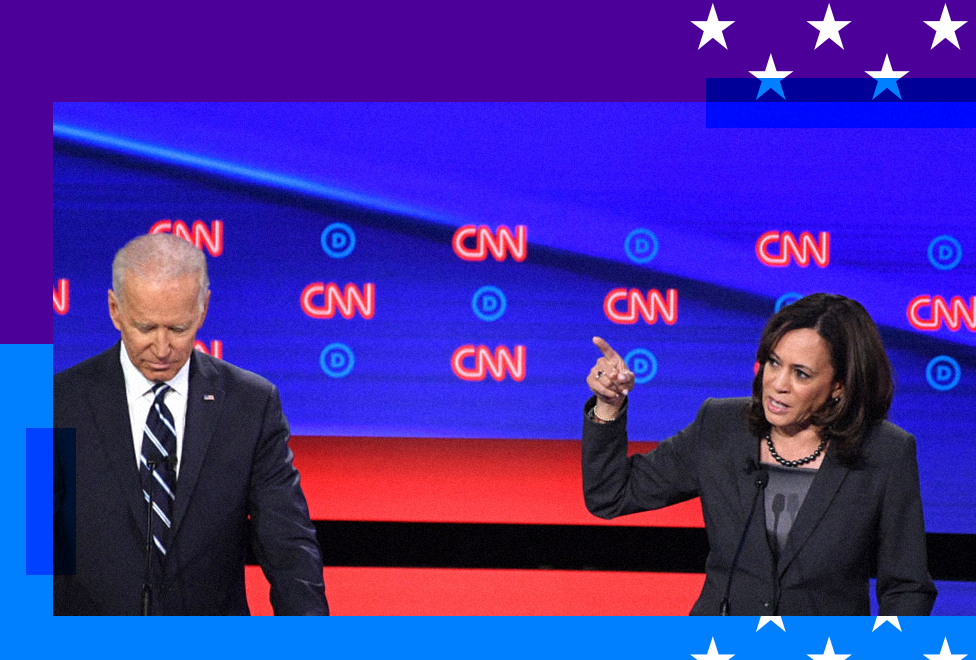
But campaign infighting and indecision on which issues to emphasise ultimately sank her presidential bid.
The campaign was marked by “a lot of rookie mistakes”, said Kevin Madden, an adviser on Republican Mitt Romney’s 2008 and 2012 presidential campaigns. “The substance that needed to be there to pass the commander-in-chief test and to really fill in some of the blanks for voters, it just wasn’t there and as a result her opponents filled it in for her.”
Eight months later, Mr Biden put aside their primary rivalry and announced Ms Harris as his running mate. She became the first woman of colour to ever be nominated in that position - and in January 2021, the first female vice-president in US history.
A rocky start
It was five months into her job as Mr Biden’s vice-president that Ms Harris endured her first public stumble during a foreign trip to Guatemala and Mexico.
The trip was meant to showcase her role in pursuing economic initiatives to curb the flow of migrants from Central America to the US southern border, a foreign policy assignment given to her by Mr Biden.
But it was quickly overshadowed by an awkward exchange in an interview with NBC News’ Lester Holt, in which she dismissed repeated questions about why she had not yet visited the US-Mexico border.
In one US state, women politicians dominate. What pointers can it offer Kamala Harris?
- Published3 August 2024
Trump and Harris battle over election’s biggest issue
- Published17 August 2024
Why the 'weird' label is working for Kamala Harris
- Published10 August 2024
Later that day, during a press conference with Guatemalan President Alejandro Giammattei, Ms Harris tried to recapture the narrative, delivering a stark message to migrants thinking of making their way to the US. “Do not come,” she told them. “Do not come.”
While the NBC News interview fuelled Republican attacks that continue to this day, the latter comments drew the ire of progressives and were quickly panned on social media, even though other administration officials had echoed the same rhetoric.

The vice-president’s allies blamed the White House for failing to adequately prepare her and assigning an unwinnable issue. They complained that as the first woman, African-American and Asian-American to serve as vice-president, outsized expectations had been imposed on her from the very start of her term, giving her little time to settle.
“There was immense pressure in the beginning to own things,” said one former aide who was granted anonymity to speak candidly about their time in the White House.
In the months that followed, Ms Harris endured more scrutiny as she faced high staff turnover, a slew of negative headlines about her performance and underwhelming media appearances. Hemmed in by Covid restrictions, she was limited in her public engagements, fuelling the perception that she was invisible.
When critics labelled her a prop for standing behind Mr Biden at bill-signing ceremonies – as her white male predecessors in the role regularly did – a decision was made to remove her from those events altogether, according to aides, triggering more criticism that she was absent.
“People had an expectation to experience her as vice-president as if she was Michelle Obama, but she was in a job… built for Al Gore or Mike Pence,” said Jamal Simmons, a longtime Democratic strategist who was brought in as her communications director during the second year.
Roe v Wade and coalition politics
As her team sought to improve her poor public image, Ms Harris stepped into a bigger foreign policy role. She travelled to Poland in the wake of Russia’s full-scale invasion of Ukraine in 2022, held bilateral meetings in Asia amid heightened tensions with China and stood in for Mr Biden at the Munich Security Conference that same year.
But in May 2022, a political earthquake would reshape the trajectory of her vice-presidency. In a rare breach of the Supreme Court, a leaked draft opinion revealed plans to overturn the landmark Roe v Wade abortion ruling - which had protected American women’s federal right to abortion for nearly half a century.
She seized on the opportunity to be the lead messenger on an issue that Mr Biden – a devout Irish Catholic who avoided even saying the term “abortion” – was reluctant to own.
“How dare they? How dare they tell a woman what she can and cannot do with her own body?” she told the crowd at an event for a pro-choice group on the same day the bombshell leak was published, deciding to attack the nation’s top judges before their decision was officially released.
The issue proved to be a driving force for voters in the midterm elections a few months later, helping Democrats to perform better than expected in congressional races and to hold the Senate.

In seeking to become the administration’s leading voice on abortion, Ms Harris tackled the issue with “clarity of purpose”, said former longtime adviser Rachel Palermo.
She convened state legislators, faith leaders, constitutional law experts, healthcare providers and advocates for roundtable discussions. It was a move panned by some activists as not meeting the seriousness of the moment but it was part of a strategy of coalition-building across local and state politics that also helped lay the groundwork for any future presidential run.
Ms Harris, who spent most of her career navigating California’s tricky mix of liberal and traditional Democratic politics, knew every event mattered.
Every meeting, photo opportunity or dinner - whether it was with black business leaders or Hispanic female CEOs – was tracked by her team in detailed spreadsheets that she could utilise when the time came to call on a deep political network for support.
“She forced the operation to mobilise around how she views politics, which is coalitions,” a senior official said.
Ms Harris always had her eye on a 2028 bid for the White House, as Joe Biden’s natural successor, assuming he won a second term in the 2024 contest.
Yet as rumblings mounted about replacing Mr Biden on the ticket after his stumbling debate performance in late June against Donald Trump, some Democrats openly overlooked her.
They, and many pundits, suggested popular governors like California’s Gavin Newsom, Pennsylvania’s Josh Shapiro or Michigan’s Gretchen Whitmer as better replacements who could motivate voters and take the fight to Trump.
On 21 July, Mr Biden phoned Ms Harris to tell her of his plans to drop out of the race and endorse her as his successor.
It was a decision that took many of his closest allies by surprise, but she sprang into action. Over the course of 10 hours that Sunday, she called more than 100 party officials, members of Congress, labour leaders and activists. Within days, any potential rivals, including the powerful governors, had fallen into line and it was clear that she would take the Democratic mantle with no serious challenge.
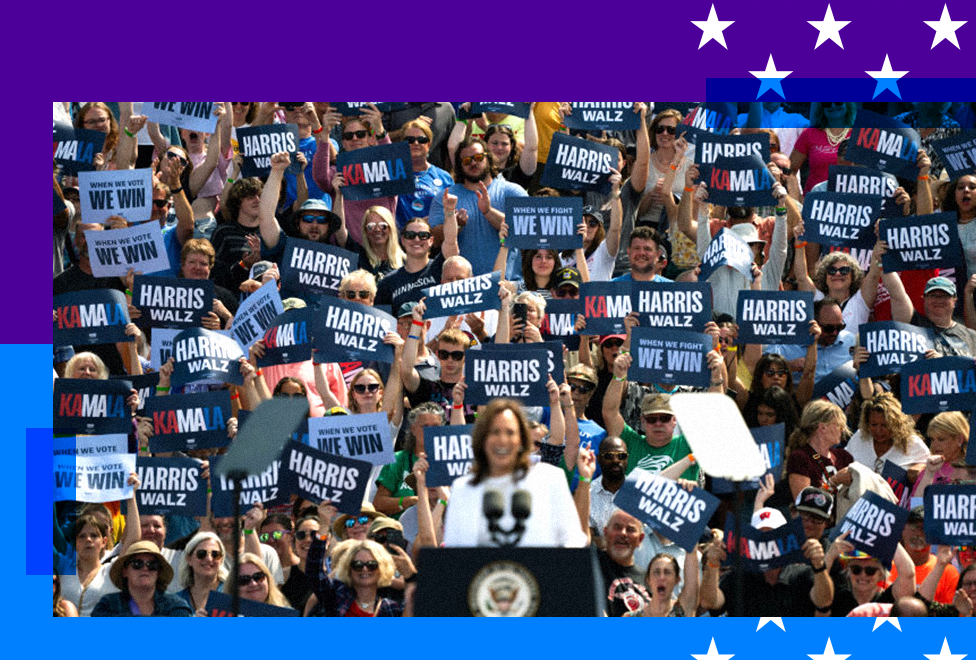
As a candidate, the vice-president has yet to lay out a detailed policy agenda or sit down for a tough media interview. She released an economic blueprint on Friday, calling for tax cuts for families and a wider push on capping drug pricing, her most detailed vision for the country so far.
Even as Republicans accuse her of avoiding scrutiny, the team around her see no rush in cutting off the momentum she’s built over the last month. Political strategists say the campaign is right to capitalise on the “sugar high”.
“What Kamala Harris is experiencing is a massive, pent-up demand for people to vote for anybody not named Biden or Trump,” said Mr Madden, the former Romney aide and Republican communications strategist. “But the test always comes with being exposed to interviews, the press, debates and the harsh glare of a campaign.”
Douglas Brinkley, a presidential historian who helped organise a meeting of historians at Ms Harris’s official residence last year, said the fact that she has been a blank slate for voters is more of a benefit than a burden.
“She may not have been able to be in full bloom under Biden but she never crossed wires with him,” he said. “So she was able to be positioned for this moment and she can take what’s good about the Biden years and shed the baggage of what she wants to, or slightly disagrees with.”
Though her entrance has jolted an outpouring of support among Democrats, it’s unclear whether she can translate that into broad appeal. While Ms Harris has made some inroads with key demographic groups that had drifted from Mr Biden – black, Latino and young voters in particular – she lags in other constituencies that made up his winning 2020 coalition.
Recent polling puts her ahead or tied with Trump in six of the seven battleground states, according to a Cook Political Report survey released on Wednesday. In May, when Mr Biden was still the Democratic candidate, Trump was ahead or tied in all seven states.
Anthony Zurcher analyses how Republicans are going after Harris - and how she's fighting back
‘I was born with a seatbelt’
Thursday night’s speech at the Democratic convention is the most consequential moment in Kamala Harris’s political career. While the Republican convention served as a coronation for Trump, who was nominated as his party’s candidate for the third consecutive time, Ms Harris’s sudden rise means her speech will be seen as a pivotal moment to define who she really is.
While she’s stood on the stage before, a senior aide said the speech will have a heavier focus on her personal story than previous nominees.
“This is the why part of the conversation. Why is she running for president? What is her vision for the country?” said Mr Simmons, her former communications director. “That will help tie together all of the strands of her policy and political life that will make sense for people.”
But over the course of four days, Ms Harris will need to sharpen her messaging around crime, inflation, the economy and immigration – issues the Trump campaign will relentlessly target between now and election day.
Whit Ayres, a longtime Republican strategist, said Ms Harris will also at some point have to clarify the left-leaning positions she took in 2019 during her failed presidential bid.
"Her greatest vulnerability is that there is plenty of evidence that she's a San Francisco liberal with a whole set of far left wing policy positions that are outside the mainstream of American thinking, and she hasn't had to answer for those yet," he said.

She will also be confronted with protests over Israel’s actions in Gaza, a polarising issue that has politically cleaved the party. Ms Harris has been more forceful in her calls for a ceasefire and condemnation of civilian deaths than President Biden, but she has not wavered from the administration’s steadfast support for Israel - a stance that risks alienating the party’s progressive wing.
“How she positions [herself on Gaza] is going to be her hardest trick,” said Mr Brinkley, the presidential historian.
Still, allies and advisers who have been preparing her over the last week contend she’s built the foundations for a presidential run over the last four – sometimes bumpy – years, even if few expected she would actually find herself in this position at this moment.
“Opportunity is preparation meeting a little bit of luck and I wouldn’t characterise this as luck, because nobody wanted it to be this way, but certainly she was prepared to meet the moment of opportunity,” a senior political adviser said.
Susie Tompkins Buell, a Democratic donor and co-founder of Esprit and The North Face who has known Ms Harris since the 1990s, said she wasn’t surprised by how Ms Harris had performed in the last few weeks.
In the days after Mr Biden’s halting debate performance, she attended an event with the vice-president and said she could tell change was afoot.
After telling Ms Harris to fasten her seatbelt, Ms Buell said the soon-to-be Democratic nominee quipped, “I was born with a seatbelt.”
“I liked her response,” said Ms Tompkins Buell, who helped Ms Harris raise $12m at a San Francisco fundraiser earlier this month. “It was sudden and it was right on. She’s ready.”
- Published23 October 2024

- Published17 August 2024
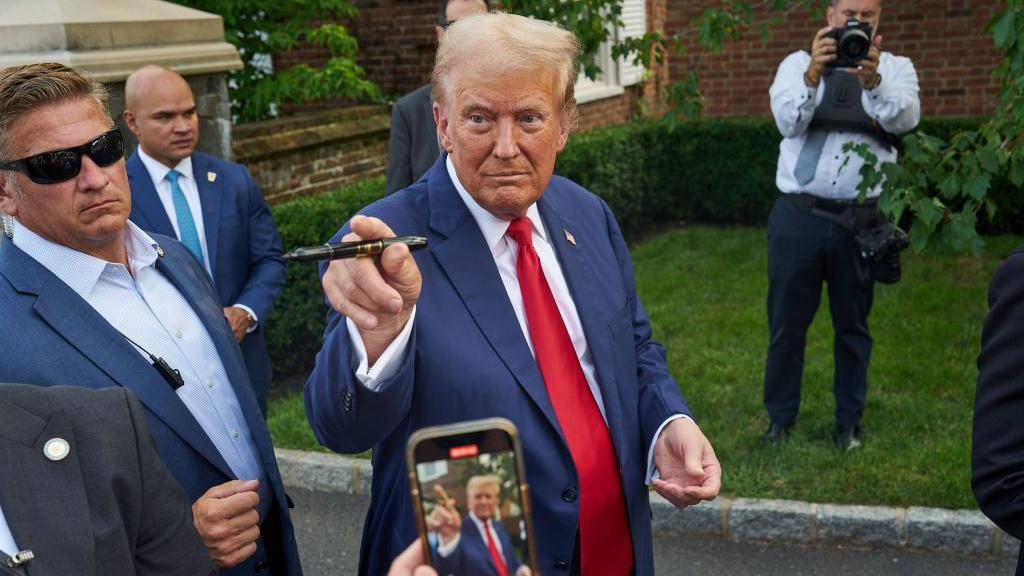
- Published1 November 2024

- Published23 July 2024
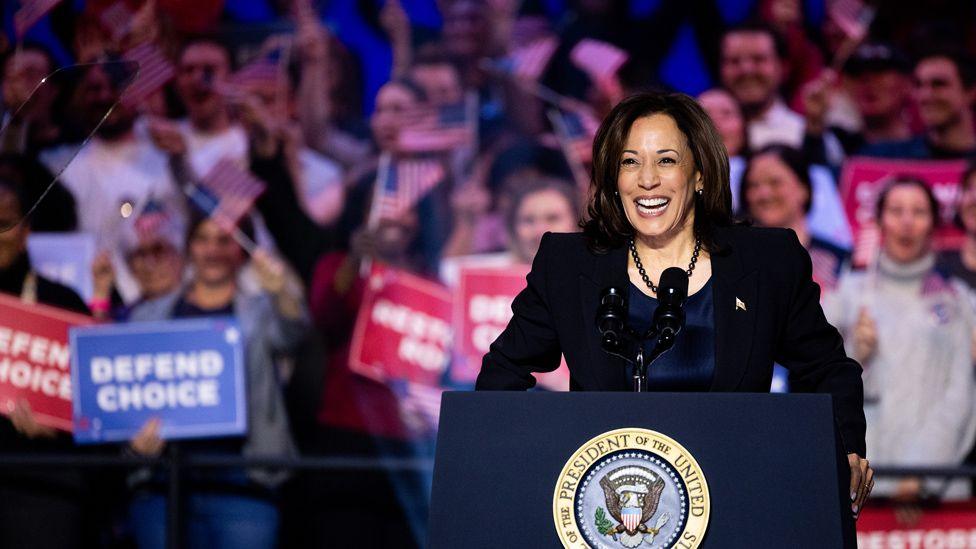
- Published3 August 2024
